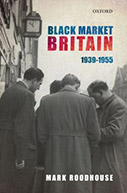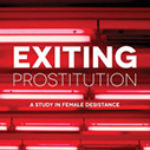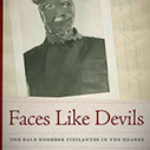Black Market Britain: 1939-1955

Author: Mark Roodhouse
Publisher: New York; Oxford, UK: Oxford University Press, 2013. 290p.
Reviewer: R. T. Naylor | March 2015
This recent addition to works on illicit markets examines an important and complex issue, the effect of economic controls imposed in Britain during World War II – and their evasion. It is distinguished by a sensible overall perspective (laid out in the opening chapter) and the amount and variety of data consulted. Not only has the author dug up facts and opinions from a range of often conflicting sources, official as well as popular, but he views legal, political, and journalistic accounts with appropriate skepticism. By using an eclectic prism informed by a combination of economic anthropology and common sense, he provides a healthy antidote to enduring efforts by orthodox economists to impose their methodology-cum- ideology on social science in general.
Take, for example, how the author explains the big increase in cash held by the public during the war. Rather than insisting that “utility maximizing” consumers would try to offset war-induced shortages by working for and spending in cash out of sight of the authorities, the author simply points out that falling bombs and rockets might induce people, fearful of war-induced disturbances to the normal flow of banking and monetary institutions, to hold more contingency money at home. Rather than being symptomatic of some suppressed inflationary cycle waiting to explode, these funds would dissipate on their own without any serious impact on the aggregate price level once the war wound down and excess cash found its way back into the banking system.
Among other useful aspects, this book offers a detailed portrayal of different regulatory bodies confusing definitions, contradicting administrative rivals, tripping over each other and, most seriously, confounding the immediate target, the black market, with the ultimate objective, the efficacy of the war effort on the home front. It is similarly effective on inconsistencies in the court system, or rather systems, in handling the same offenses in different ways with different results.
Not least, a full book (or several) on this subject is especially welcome at a time when the prevailing academic fad is for short-term maximization of articles typified by ever fewer pages, ever more co-authors, and ever less useful content, particularly if a poverty of concrete substance can be hidden by a cornucopia of symbolic flourish.
Put simply, the author knew the right questions to pose; he knew (or found out the hard way) where to look for data to elucidate them; he understood the difference between “laws” and heuristics in describing economic phenomena; and he was also fully aware of the importance of understanding the impact of wartime controls within a broader pre-existing social-cum-ethical context, one that would also help to shape reactions to those controls. However, when it came to sorting and ordering the mass of information the author assiduously unearthed, his performance is less than stellar.
In too many sections the book comes across as a mass of undigested data points and poorly contextualized observations. There is at no place a clearly detailed exposition of division of function between different parts of the bureaucracy or various levels of courts, something that would have been useful, certainly for non-British audiences and quite likely for some British ones as well. That leaves the reader, in effect, to infer or guess at the significance of these and other administrative puzzle-palaces, while simultaneously trying to sort a multiplicity of sometimes only partly related examples.
There are also questions about the choice of time periods. To be sure, the war years are his main focus. But to really get a good grip on how activities that were unambiguously illegal or simply borderline evolved during the war requires some analysis of patterns of illicit activity, and of the socio-political context in which they emerged, before war-time controls existed. There is likely a substantial difference in economic behavior and attitudes towards regulatory authority during periods of pre-war Depression (when class struggle in all but name was the rule and when aggregate excess capacity confronted a dramatic shrinkage of overall purchasing power) than during wartime. When the war broke out, patriotic sentiment would swamp class consciousness and, given the existence of more-or-less full employment, the main social concern apart from the war per se, was not economic insecurity, but lack of things on which to spend stable or rising incomes. Similarly the book could have done a better than token job of examining the postwar period when controls were initially tightened – after all, the title promises a 1939-1955 treatment. The author’s general position is that commitment by the populace at large weakened once the war, but not the controls, ended, particularly since conservative forces were busy laying the foundation for a shift of ideology from fair shares to fair deals. All that is likely true, but is based more on supposition than on fact.
Similarly there are passing references, almost asides, to the differences between the British experience and that of other countries, notably the US and Western Europe. Yet these notions are based on vague generalizations about other country experiences that are probably at least as suspect as those he successfully debunks in the British case. To the author, again probably correctly, even the “black market,” itself distinct from the “gray market” of self-help, mutual assistance and penny-ante fiddles, is mainly the work not of career criminals but of newcomers taking advantage of opportunities the war created. It was also perhaps a scaling up of things like the theft rackets run by lorry drivers and dock workers, something that existed not just in Britain but across the western world for decades before, during, and even after the war. In fact across the major ports serving the old formerly dominant Atlantic shipping routes, this behavior was seen not so much as criminality but of an informal pay supplement that seems to have survived pretty much intact, until the rise of the container ship and automated loading-unloading led to virtual obliteration of longstanding communities of longshoremen.
That raises what is probably the most problematic of weaknesses in his account. On one side he points out repeatedly how fuzzy is the frontier between the concepts of black and gray economic activity. On the other he employs those same terms as organizational structures. If “black market” and “gray market” are such obviously subjective and slippery concepts, easily redefinable at a user’s convenience but void of legal significance, why deploy them in the actual analysis of the data? This seems most problematic when he includes in the gray market category, not simply extensions of pre-war self-help, mutual assistance, and friend-and-neighbour-based swap agreements, but also “paid favours.” Yet he remarks: “Unlike the grey marketeer guilty of under-the-counter favoritism, the black marketeer charged customers extra for this service.” Strangely, this seems to boils down to defining black market deals as intermediated by cash alone, something that makes no sense in light of his own insistence that the “paid favor” belongs to the grey not the black realms.
This is more than just a terminological quibble. The author’s ultimate conclusion is that during the war, and just after, the “black market” was “socially significant but economically unimportant.” Although I strongly suspect that conclusion is right, it cannot stand much scrutiny if no one is clear what the limits of the black market really are, or for that matter just what it means to be “significant” or “unimportant.” Someone could look at the same data and perhaps draw the reverse conclusion. Perhaps the black market – that I would define as a class of economic activity more likely to attract serious criminal and regulatory censure than just a slap on the wrist for licensing offenses, coupon-requirement fiddles, or sales tax avoidance – was economically important but socially irrelevant. That alternative conclusion could be possible if, for example, taking all the frauds and fiddles together, though without things that were purely extensions of pre-war community institutions, the result affected enough economic activity to impact, not just the distribution of economic resources between sectors of the civilian economy but the share of total flows getting to the war effort, the only criteria by which success or failure of economic controls in this period can ultimately be reasonably judged. In some cases, especially in occupied countries (which Britain also was, in one sense, from 1941 until the end of the war), wartime redistributional black markets and even a modicum of leakage from war-designated production to illicit civilian consumption might be consciously tolerated to keep public discontent within bounds.
Not least, any insistence by officialdom or the author that the economic impact of the British off-the-books trafficking was minor has to factor out of the equation the massive flood of material aid pouring into Britain from the US and the empire, little of which, as the author points out, did much to feed black, grey or “dirty white” markets – they were overwhelmingly supplied at home.
There are several possible explanations for the organizational and terminological defects in what is otherwise an interesting and useful study. Perhaps the author lacked sufficient confidence in his own conclusions to avoid evidentiary overkill. Yet the clarity with which his perspective is outlined at the start, and summed up at the end, would seem to signal the contrary. Perhaps the author was simply overwhelmed by the mass of information from widely disparate sources pursuing widely different agendas, and the difficulty of sorting through muddles, both administrative and terminological, that result. Yet one of the strengths of the book is the author’s observations on the impact of those differing agendas in terms both of the mindset of the different agencies and their conduct of their responsibilities. Perhaps the author was simply unable to find alternatives to the categories – “dirty white,” “gray,” “black” etc. – used popularly and academically to differentiate degrees of harm, whether social, economic, or merely moral, and found himself trapped by the need to base his work on an accepted pre-existing discourse. Yet his own nuanced use of those concepts in some places makes it is hard to believe he was not aware of the trap this methodology posed. Finally, perhaps his publisher simply refused to pony up for sufficient editorial assistance that might have greatly improved the exposition. If so that is too bad. With better structure and a more judicious editorial pen, this could have been a remarkable piece of work. It is still good – it just could have been a lot better.
—
R. T. Naylor is Professor of Economics at McGill University in Montréal, Québec. His work has appeared frequently in Crime, Law & Social Change of which he was for a decade a senior editor. He is the author of 12 books including: Hot Money & the Politics of Debt; Patriots & Profiteers – Economic Warfare, Embargo Busting and State-Sponsored Crime; Wages of Crime – Black Markets, Illegal Finance and the Underworld Economy; Satanic Purses – Money, Myth, and Misinformation in the War on Terror; Crass Struggle – Greed, Glitz and Gluttony in a Wanna- Have World; and, most recently, Counterfeit Crime – Criminal Profits, Terror Dollars and Nonsense. Thanks to Mike Levi for comments on the initial draft of this review.


